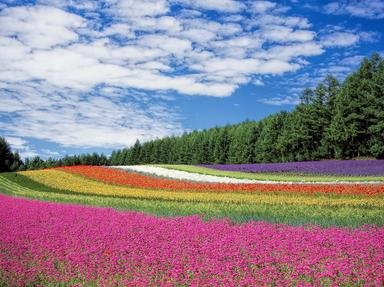Quiz Answer Key and Fun Facts
1. Which ancient civilization first developed the highly prized purple dye, which later became a symbol of imperial power?
2. Amethyst is the best-known of all purple or violet gemstones. The Ancient Greeks believed it would protect its owner from what inconvenient (though self-inflicted) condition?
3. Flowers in various shades of purple are enduring garden favourites. The lovely Michaelmas daisy is named after a holiday that falls in what month of the year?
4. What chemical element, a transition metal with atomic number 25, was the source of one of the earliest purple pigments used in history?
5. With its striking dark purple and green plumage, the sisserou parrot is endemic to which Caribbean island country - on whose flag it appears?
6. Together with green and gold, purple is one of the traditional colours of which boisterous holiday, celebrated in some parts of the Southern US?
7. Roman Catholic priests wear purple or violet vestments during Advent and Lent. They will also wear a purple stole when administering which of the seven sacraments?
8. Locally named "ube", purple yam is frequently used as an ingredient of cakes and desserts in which Southeast Asian country, a former US overseas territory?
9. What influential turn-of-the-20th-century artist from Central Europe made extensive use of purple and violet in his paintings?
10. By what common name are the dark purple berries of the plants of the genus Sambucus known?
Source: Author
LadyNym
This quiz was reviewed by FunTrivia editor
agony before going online.
Any errors found in FunTrivia content are routinely corrected through our feedback system.

